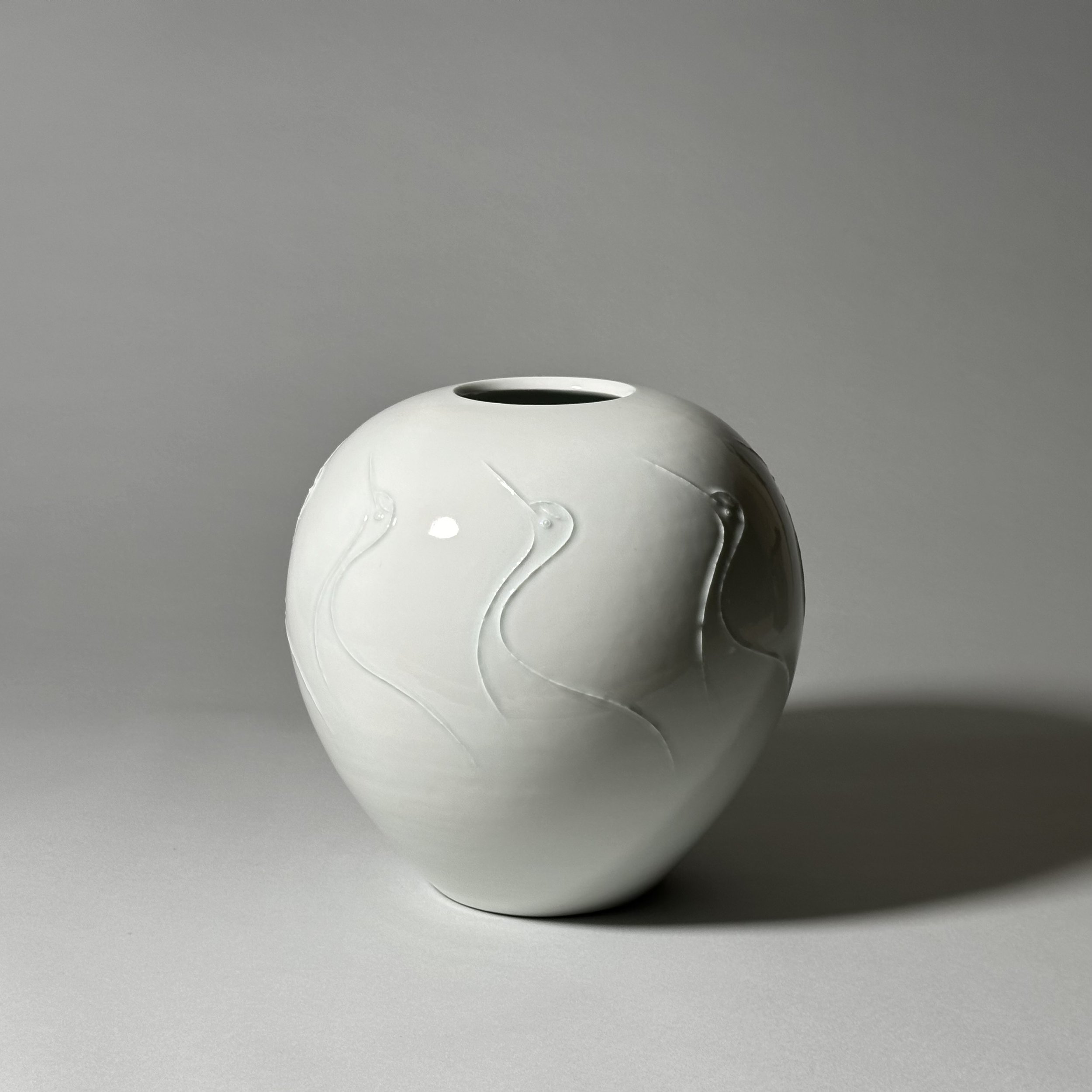 Image 1 of 9
Image 1 of 9

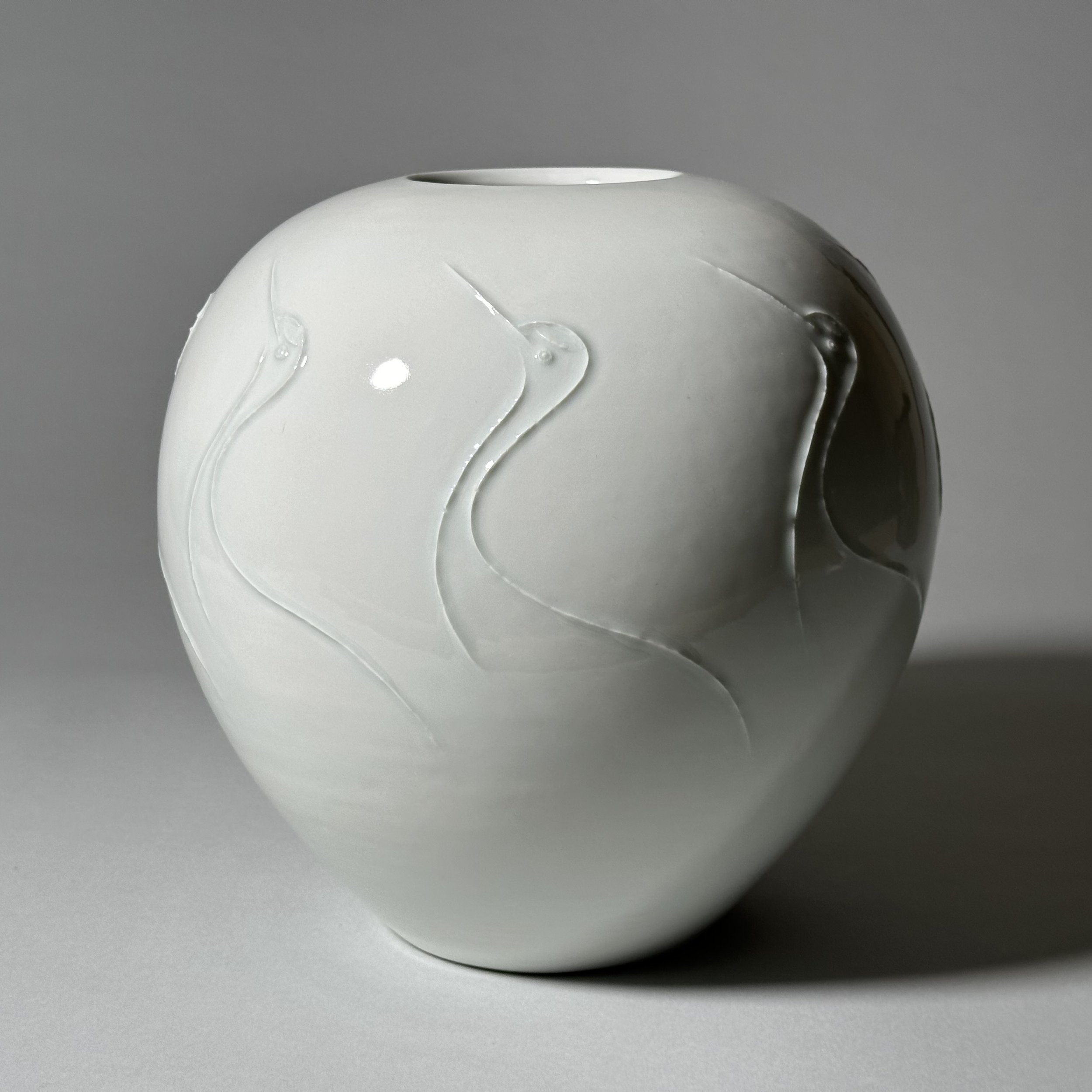 Image 2 of 9
Image 2 of 9

 Image 3 of 9
Image 3 of 9

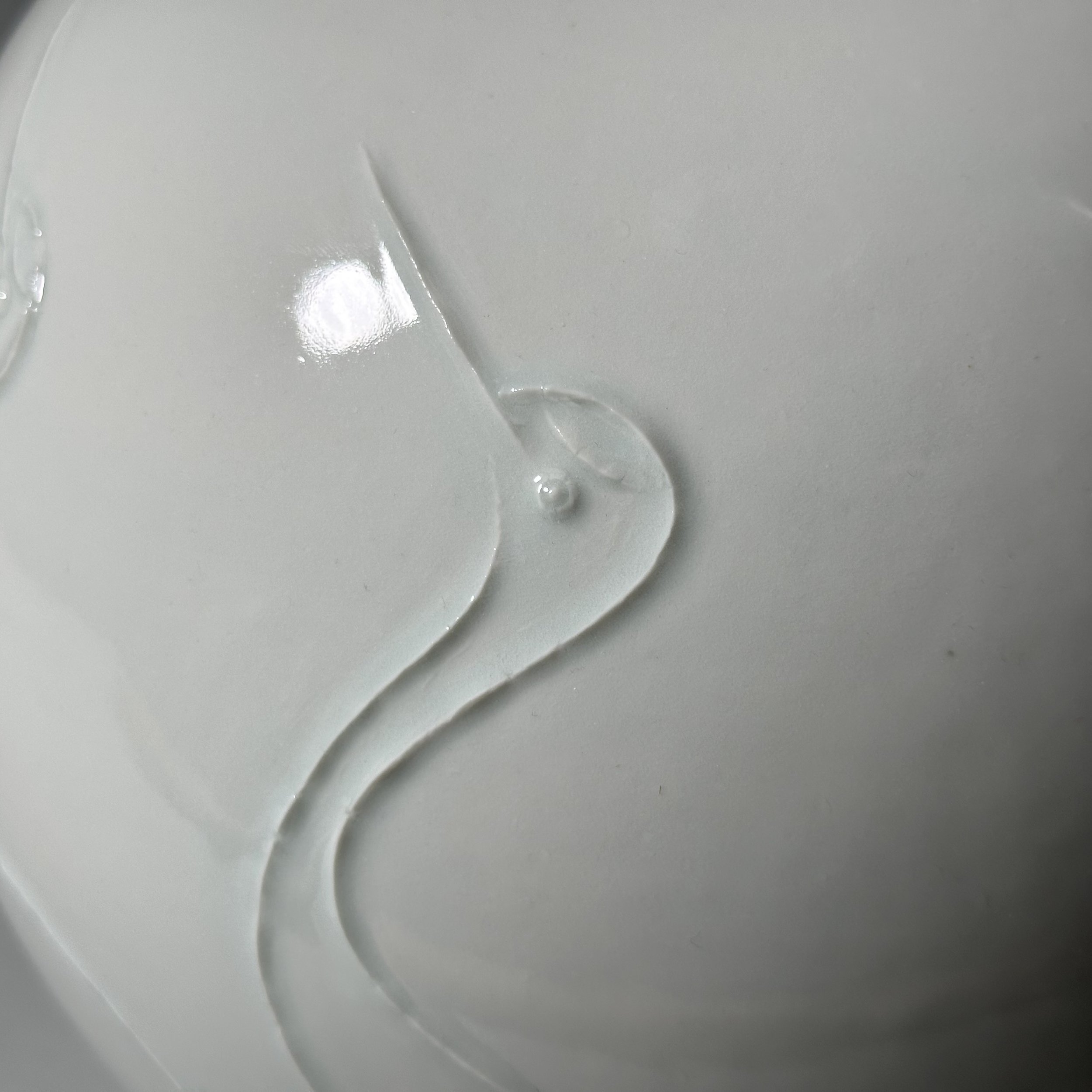 Image 4 of 9
Image 4 of 9

 Image 5 of 9
Image 5 of 9

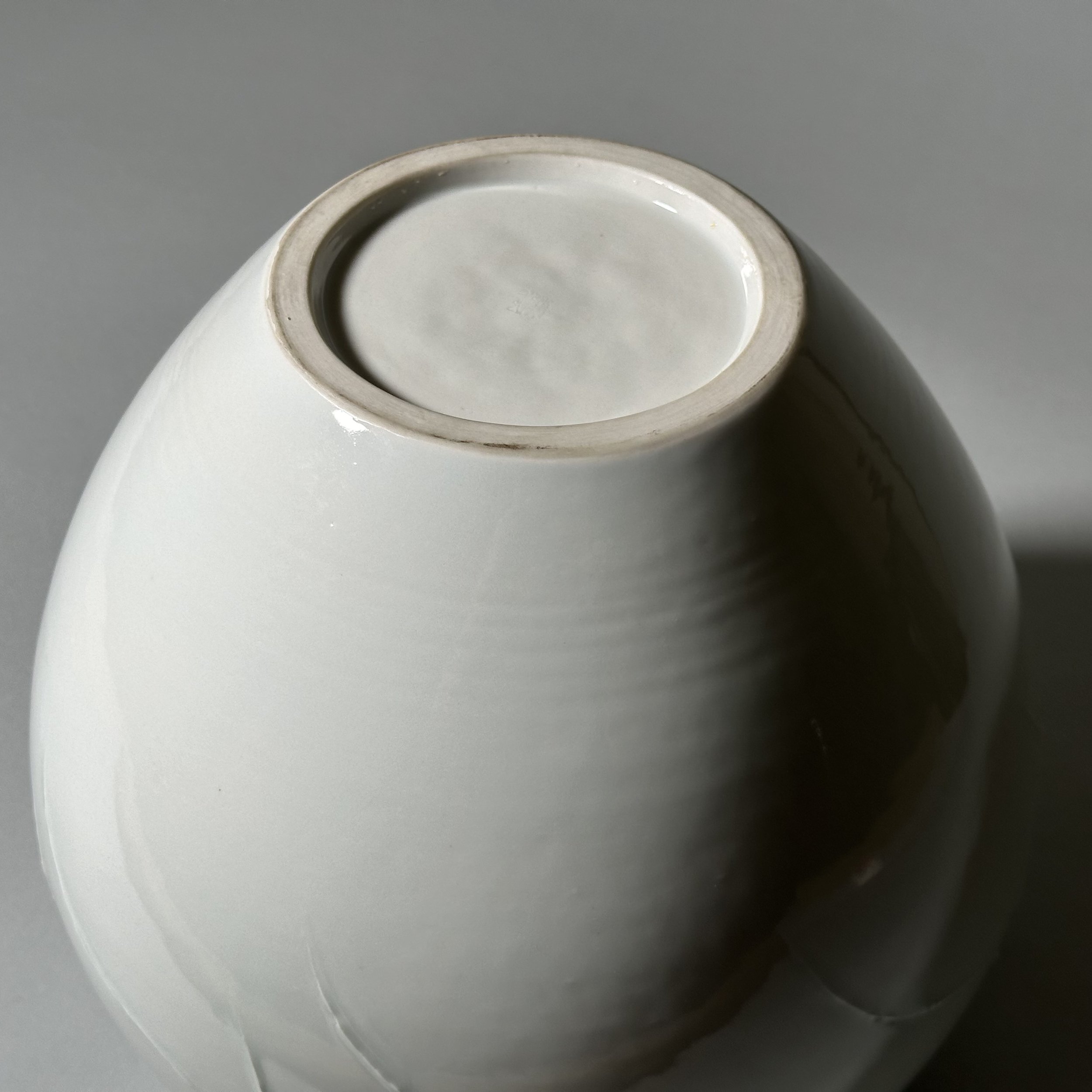 Image 6 of 9
Image 6 of 9

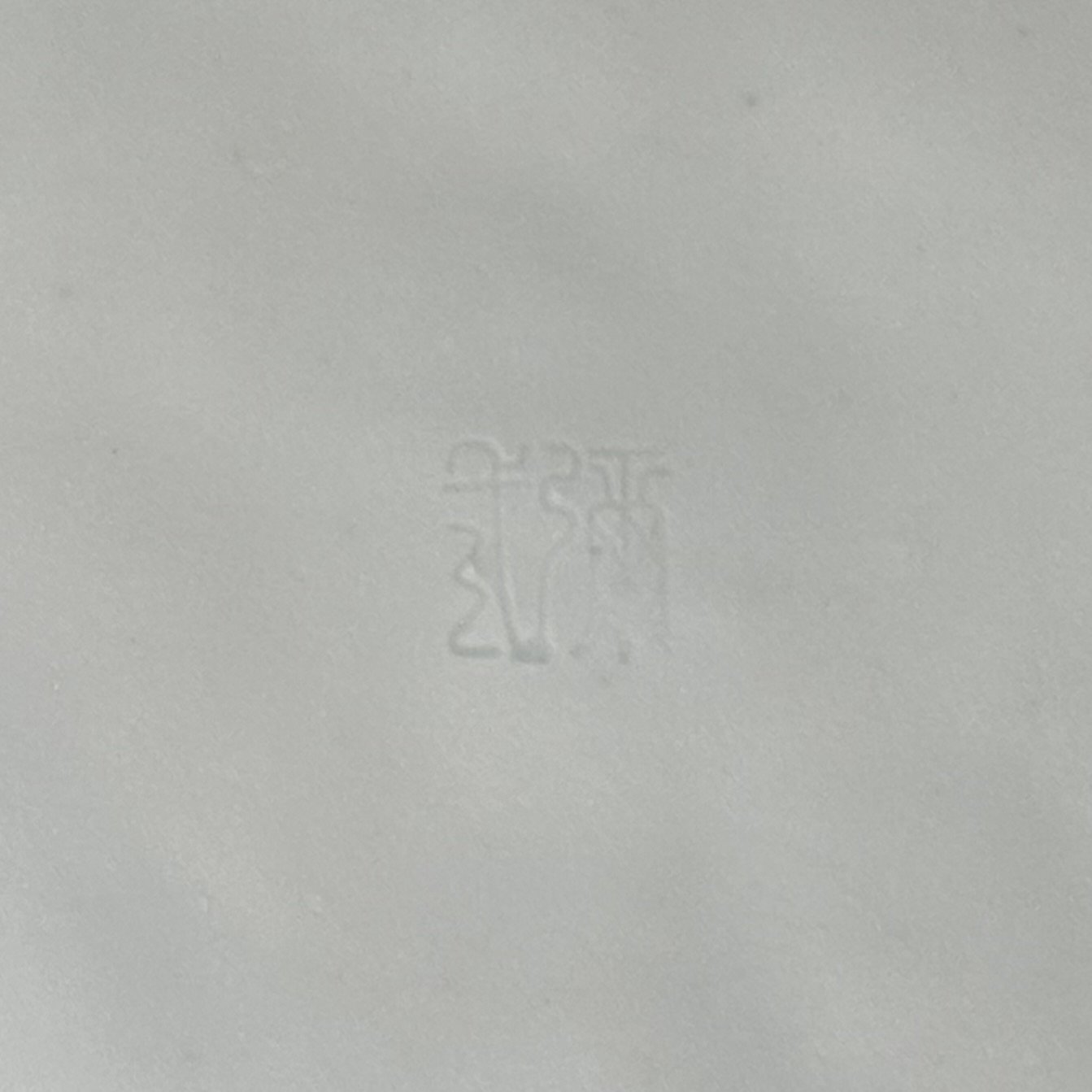 Image 7 of 9
Image 7 of 9

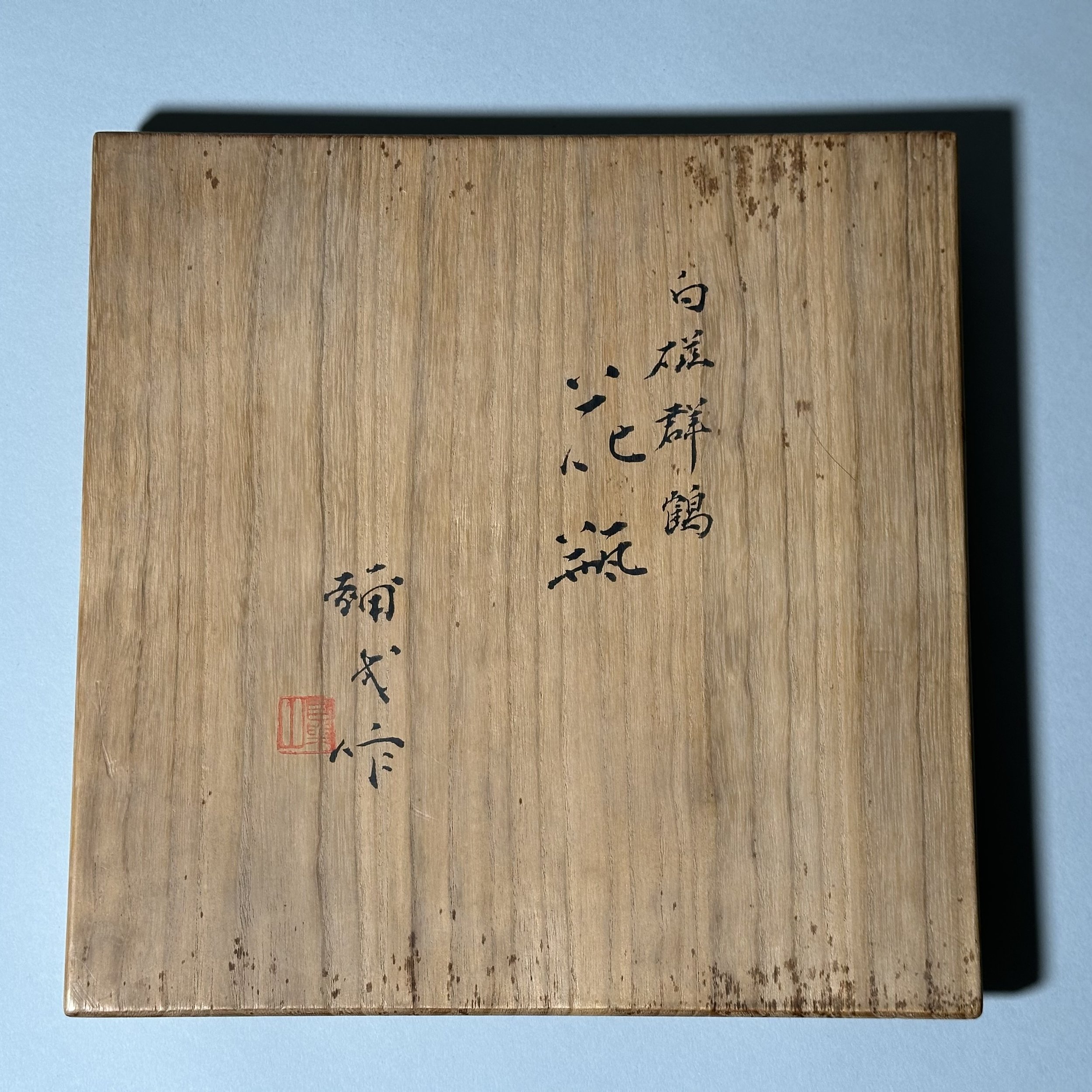 Image 8 of 9
Image 8 of 9

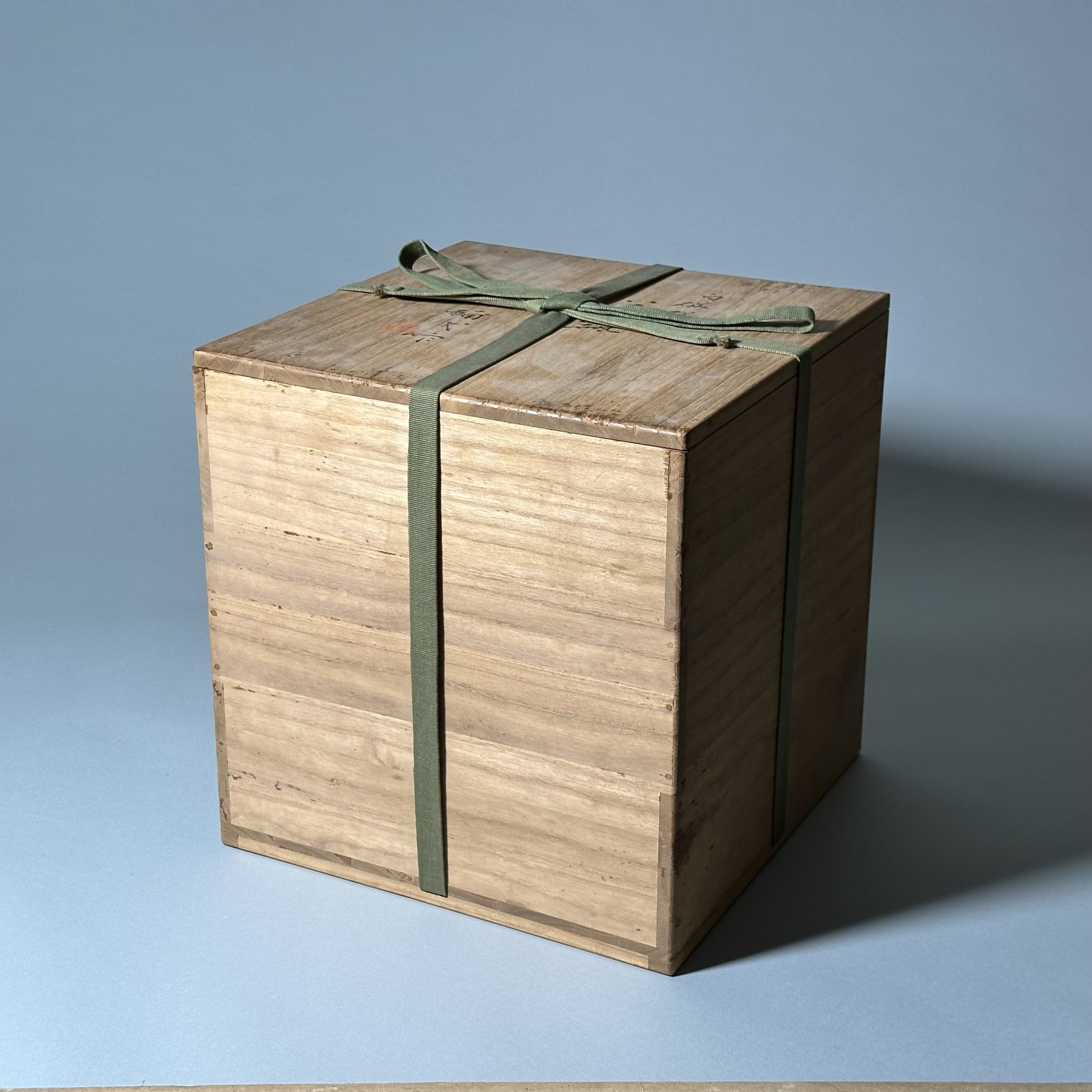 Image 9 of 9
Image 9 of 9










Crane vase by Kusube Yaichi (1897-1984)
Japan, Kyoto
Showa Period (1926-1989)
Of ovoid form in white porcelain decorated with abstracted cranes in applied slip, the clear glaze with a slightly bluish tint where it pools around the crane decoration. 29.5cm high, 28.5cm diameter. Together with the original signed box and signed cotton wrapping cloth.
Catalogue 347.
Kusube Yaichi (1897-1984) attended the Kyoto Municipal Ceramics Institute upon completion of his schooling. Unlike many Kyoto ceramicists who came from a background in ceramics Kusube was an early product of what was to become the norm for training ceramicists in the 20th century. He tended to be independent of larger organisations although he was involved in forming ‘Sekido’ in 1920 and later ‘Akatsuchi’ ceramic associations. As with so many of his generation his early work reflected Chinese and Korean ceramics but, through his own experimentation, he progressive widened his repertoire with original forms and glazes of his own. This culminated with his Saien inlay technique that produced arguably some of the most beautiful porcelains of the late 20th century. He received the order of Cultural Merit in 1978 and passed away in Kyoto at the age of 87.
Japan, Kyoto
Showa Period (1926-1989)
Of ovoid form in white porcelain decorated with abstracted cranes in applied slip, the clear glaze with a slightly bluish tint where it pools around the crane decoration. 29.5cm high, 28.5cm diameter. Together with the original signed box and signed cotton wrapping cloth.
Catalogue 347.
Kusube Yaichi (1897-1984) attended the Kyoto Municipal Ceramics Institute upon completion of his schooling. Unlike many Kyoto ceramicists who came from a background in ceramics Kusube was an early product of what was to become the norm for training ceramicists in the 20th century. He tended to be independent of larger organisations although he was involved in forming ‘Sekido’ in 1920 and later ‘Akatsuchi’ ceramic associations. As with so many of his generation his early work reflected Chinese and Korean ceramics but, through his own experimentation, he progressive widened his repertoire with original forms and glazes of his own. This culminated with his Saien inlay technique that produced arguably some of the most beautiful porcelains of the late 20th century. He received the order of Cultural Merit in 1978 and passed away in Kyoto at the age of 87.
